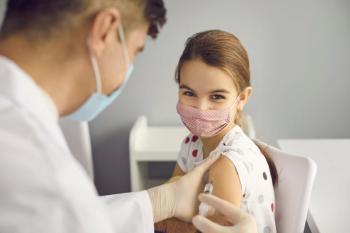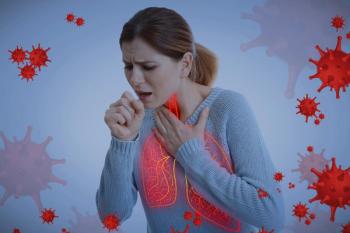
COVID-19 Vaccines: T Cell, Antibody Responses Demonstrated in CLL
Patients with chronic lymphocytic leukemia experienced functional T cell and antibody responses after receiving a vaccine for COVID-19.
The COVID-19 vaccines induced functional T cell and antibody responses when given to patients with chronic lymphocytic leukemia (CLL), providing a framework for further investigation of mechanisms and clinical benefit of responses, according to findings from a prospective cohort study (NCT05007860) published in Blood.1
Overall anti-SARS-CoV-2 serologic response rate (SRR) after vaccination was 60% among patients with CLL who were not receiving a therapy. SRR was higher in patients who were treatment-naïve (72%; n = 18/25) compared with those who were previously treated (0%; n = 0/5).
“These data provide a model for comprehensively assessing vaccine immunogenicity in other high-risk populations excluded from pivotal trials,” the investigators wrote. “Taken together, our findings confirm that post-vaccination [receptor binding domain (RBD)]–immunoassay antibody testing underestimates the immunogenicity of SARS-CoV-2 vaccination and provide evidence of functional humoral and/or cellular immune responses following vaccination against SARS-CoV-2 in the majority of CLL patients.”
Eligibility required patients to have been diagnosed with CLL/small lymphocytic leukemia (SLL) and be aged 18 years or older. Patients were excluded if they had human immunodeficiency virus or primary immune deficiency disorder, if they planned to start CLL therapy within 2 months, if they were treated with a CD20 Ab within 6 months, if they underwent chemotherapy within 1 year, or received any prior bendamustine or fludarabine.
The study’s primary end point was serologic response to vaccination, defined as a 4-fold or greater increase or seroconversion.
A total of 36 patients with CLL/SLL enrolled on the study from August 2020 to August 2021. The median patient age was 62 years (range, 31-86). Most patients were male (61%) and had a Rai stage of 0 to I (97%).
A total of 30 patients were included in the primary cohort for analysis, 25 of whom were treatment-naïve and 5 were previously treated. Most patients in this cohort received mRNA-based vaccines (80%), with the remaining 20% receiving adenovirus-based vaccines.
For patients who were treatment naïve and received an mRNA vaccine, SRR was 77% compared with 33% for patients who received an adenovirus-based vaccine. The SRR for 6 patients who were being treated with a BTK inhibitor was 33%. Among the 11 patients who received an additional dose of a vaccine after remaining seronegative, the SRR was 55%. Although 1 patient achieved detectable RBD-immunoassay, they were considered to be a non-responder.
A univariate analysis for patients not on therapy determined that factors associated with serologic response to vaccine included an absolute lymphocyte count of 24,000/uL or less (P = .028), an absolute CD3 T cell count more than the median (P = .021), and mRNA-based vaccine use (P = .035).
Of the 20 patients with CLL who had samples available for T-cell assays, 80% had functional T-cell responses to the SARS-CoV-2 spike protein. Among the 9 patients who did not achieve a serologic response on RBD-immunoassay, 7 showed functional T-cell responses. In particular, 2 patients who did not have an RBD-immunoassay or functional T-cell response experienced an absolute lymphocyte count of over 24,000 uL.
Reference
- Haydu JE, Maron JS, Redd RA, et al. Humoral and cellular immunogenicity of SARS-CoV-2 vaccines in chronic lymphocytic leukemia: a prospective cohort study. Blood Adv. Published online January 24, 2022. doi:10.1182/bloodadvances.2021006627
Newsletter
Pharmacy practice is always changing. Stay ahead of the curve with the Drug Topics newsletter and get the latest drug information, industry trends, and patient care tips.















































































































